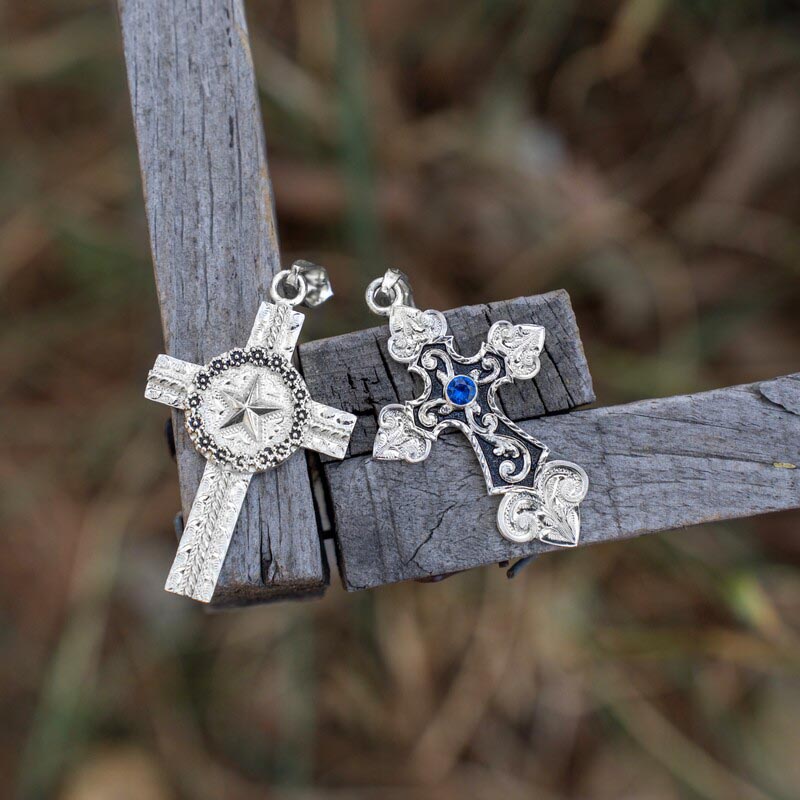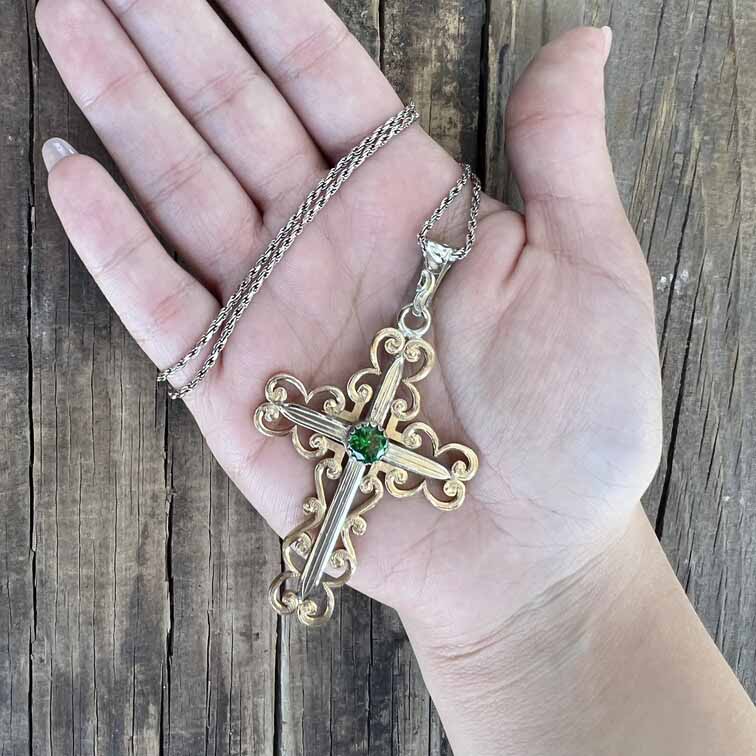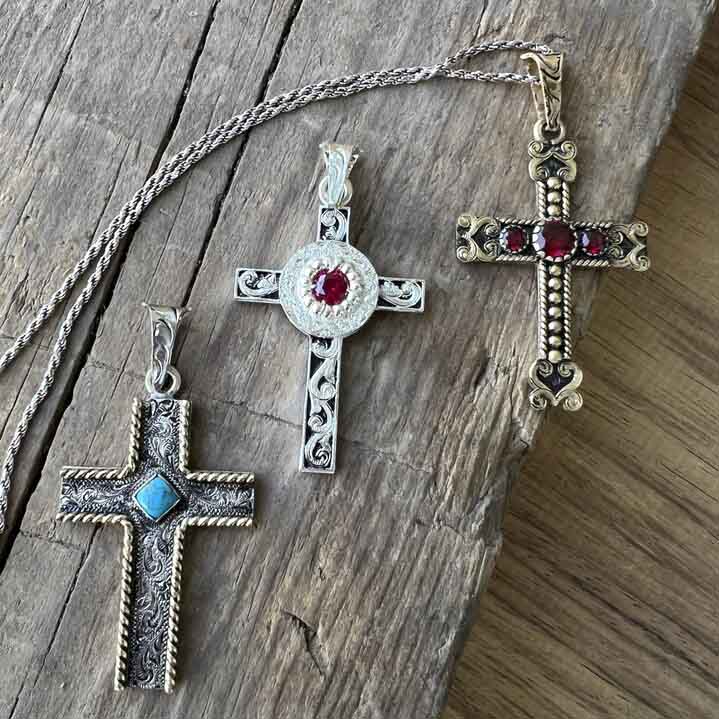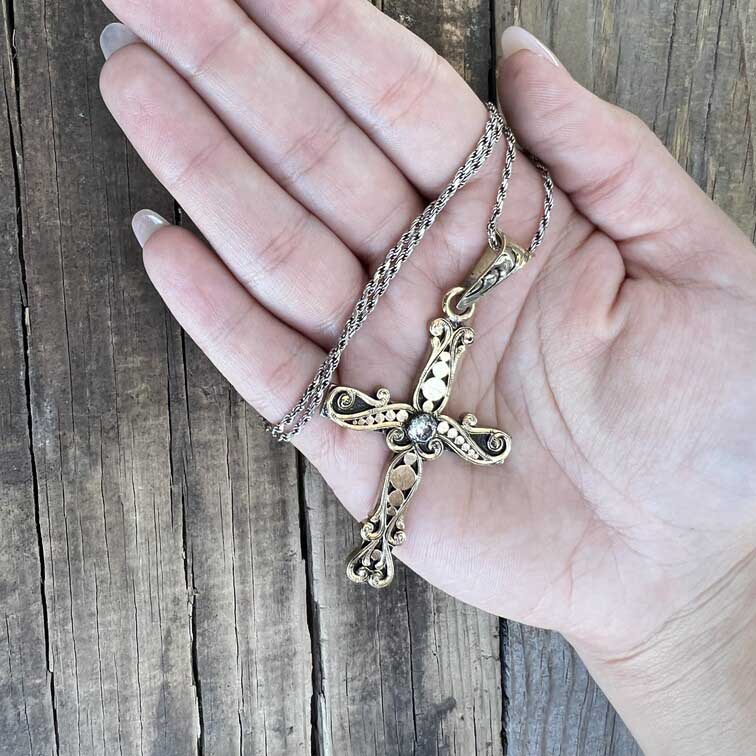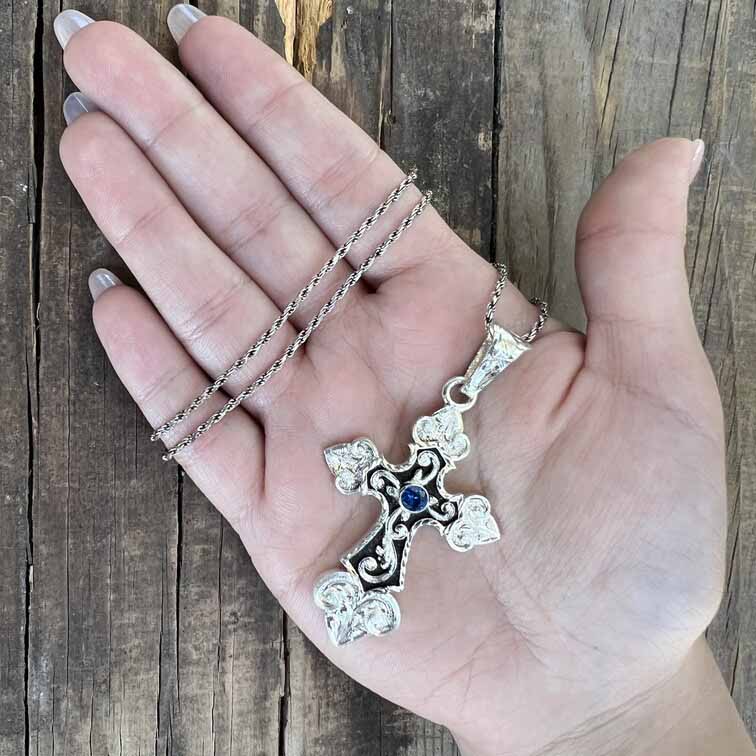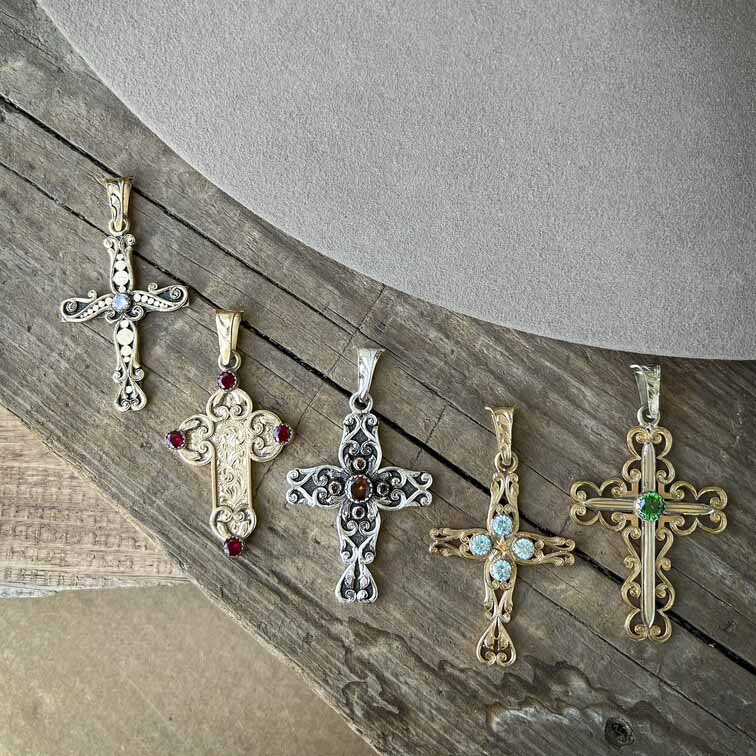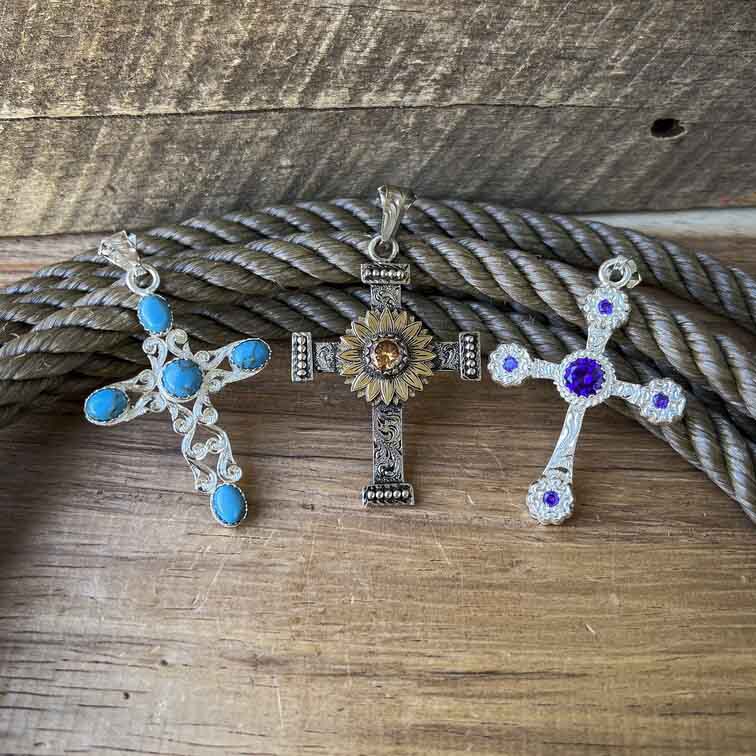Outside of Christianity, crosses were present in other cultures as well. For example, ancient Egyptian cultures used ankh crosses, symbolizing life and immortality. Celtic crosses, with their distinctive knotwork, have roots in early medieval Celtic Christianity. Wearing a crucifix or cross pendant is not exclusive to Catholics, as these symbols hold significance in various religious and spiritual contexts. A plain cross without the figure of Jesus can be more broadly symbolic. The choice between a crucifix and a plain cross is a matter of personal preference and religious or spiritual beliefs. Ultimately, the decision to wear a cross pendant is a personal one, and it can carry various meanings depending on an individual's beliefs and values.
The symbolism of the color of stones in cross pendants carries its own symbolic weight, contributing to the overall message conveyed by the pendant. For instance, a red stone may symbolize the blood of Christ and the sacrifice made for humanity, evoking themes of passion and redemption. On the other hand, a blue stone could represent heavenly virtues, spirituality, and divine wisdom. Green stones may signify growth, renewal, and the eternal life promised by faith. Purple stones in cross pendants often symbolize royalty, spirituality, and the divine connection. Turquoise stones, with their unique blend of blue and green, embody tranquility, protection, and a connection to the heavens. Orange stones in crosses may evoke warmth, enthusiasm, and the energy of the sun, symbolizing the vibrancy of faith and the spiritual journey. Brown stones can be associated with grounding, stability, and the earthly elements, signifying a connection to the material world and a reminder of humility. Silver, often chosen for its metallic luster, signifies purity, clarity, and the radiance of the divine. Black stones, while less conventional, can carry profound symbolism, representing mystery, transformation, and the overcoming of darkness through faith.
Cross pendants showcase a diverse array of styles and designs to suit varied tastes. Traditional crosses offer a timeless simplicity with its vertical and horizontal bars intersecting, represents Christianity and the crucifixion of Jesus Christ. Celtic crosses incorporate intricate knotwork for a touch of artistic flair symbolizing eternity and the interconnectedness of life. Gothic crosses feature dramatic and elaborate designs with filigree work, often embodying a sense of mystery and spirituality through elaborate designs and dark aesthetics. Religious symbols, vintage-inspired designs, and personalized engravings add layers of meaning, providing options for sentimental and classic styles.
While both a cross necklace and a crucifix are symbols of Christianity, they differ in their depiction of Jesus Christ. A cross necklace typically features a plain cross symbol, consisting of two intersecting lines representing the crucifixion, but without the figure of Jesus. It serves as a general representation of faith or as a fashion accessory. On the other hand, a crucifix is a specific type of cross necklace that includes a figurative representation of Jesus Christ, usually depicted as being crucified on the cross. This representation includes Jesus's body, often showing his arms outstretched, and may include additional details such as the crown of thorns or the INRI inscription. The crucifix holds deep religious significance for Christians, symbolizing the sacrifice and redemption of Jesus Christ. In essence, while both the cross necklace and the crucifix are symbols of Christianity, the crucifix specifically includes the figure of Jesus Christ, making it a more overtly religious symbol.
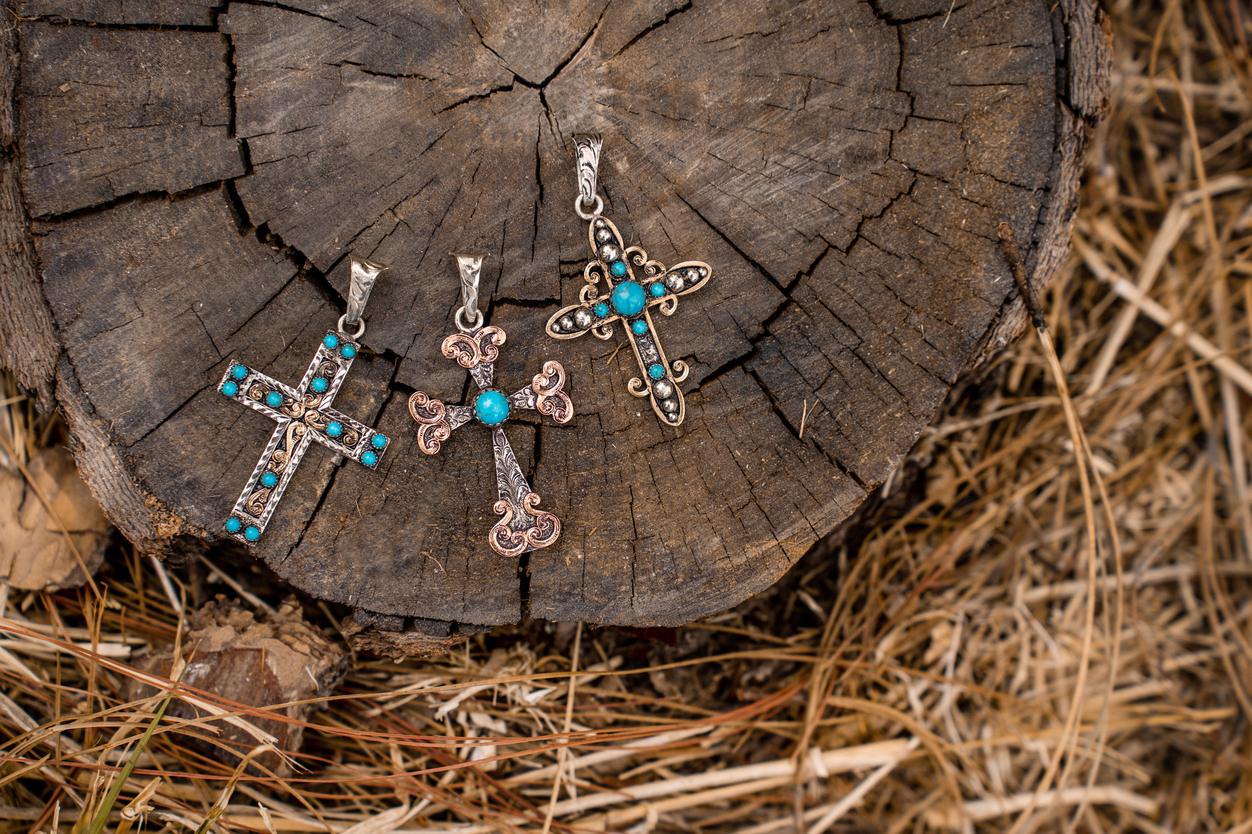
![]() Each handcrafted piece is backed by a repair warranty*, ensuring durability and quality that transcends time.
Each handcrafted piece is backed by a repair warranty*, ensuring durability and quality that transcends time.![]() We offer prompt express delivery. Orders arrive within 40-60 days, with in-stock options delivered even sooner (1-10 days).
We offer prompt express delivery. Orders arrive within 40-60 days, with in-stock options delivered even sooner (1-10 days).![]() Tailor your cross necklace at mollyscustomsilver.com or by reaching out to our Customer Service Experience at (682) 717-1770
Tailor your cross necklace at mollyscustomsilver.com or by reaching out to our Customer Service Experience at (682) 717-1770